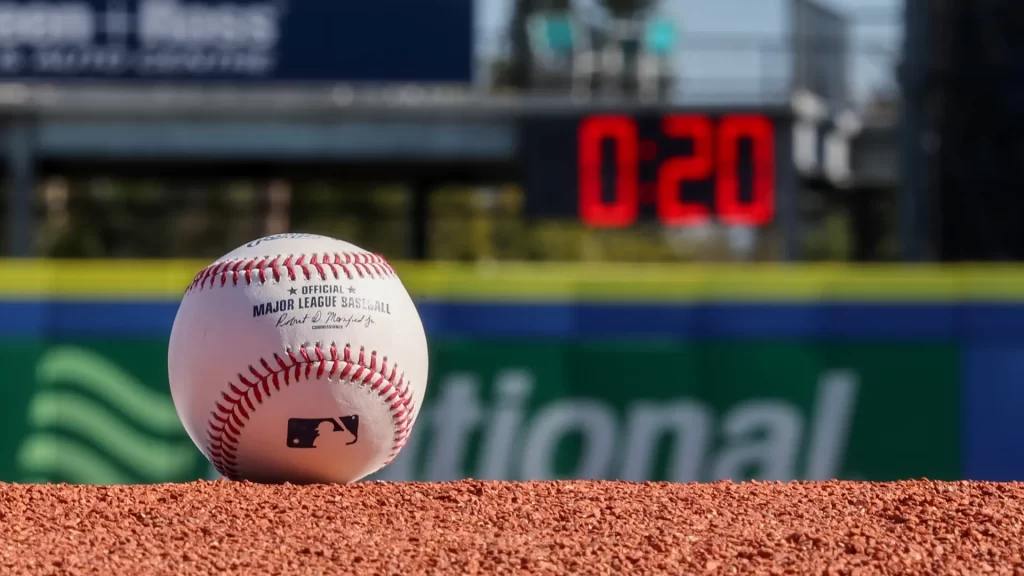Pitch clock. Bigger bases. Three-batter minimum. Automated strike zones in the minor leagues. Extra inning ghost runner. These are just some of the major changes by Major League Baseball in recent years. With these changes has also come a new age of analytics, impacting how the game is played and managed. Starting pitchers pitching deep into the late innings has become the exception, rather than the norm for even the best in the game.
Let pitchers pitch deep into games. Yes, analytics are now a part of the game and usually recommend against a pitcher pitching a third time through the order, but the eye test should still be in play.
“They don’t give guys a chance to figure things out,” longtime play-by-play broadcaster Dave Sims said. “I think just the mentality of pitches and the way pitchers are taught, I’d love to see that change back to ‘Hey, this is my game. I’m going seven.’”
If a pitcher is dealing and is within a reasonable pitch count, let him keep going. Especially during a no-hitter! Of MLB’s 21 combined no-hitters, seven of them were thrown in the last four seasons. In the Chicago Cubs’ combined no-hitter against Pirates last year, rookie phenom Shota Imanaga was pulled after seven no-hit innings, after only 95 pitches. At least let him pitch through the eighth!
A record-low 26 complete games were thrown in 2024, the Associated Press reported, down from 114 in 2014 and even further back, 131 in 1988. In 2011, James Shields threw 11 complete games. Curt Schilling threw 15 in 1998. In 2024, the leading complete game pitchers threw just two each.
But it’s not just the complete games. We now regularly see pitchers fail to officially record a quality start – allowing three earned runs or less in at least six innings of work. Fantasy baseball team owners know the pain of watching your starting pitcher get pulled at 5 2/3.
Pitcher safety has become a growing concern in recent seasons, as Tommy John surgeries are at an all-time high. According to injury analyst Joe Roegele, 35% of all MLB pitchers have had the surgery in 2023. The exponential growth of youth travel baseball is a contributing factor, as well as the bigger focus on throwing at higher velocities.
“At some point that has to turn if we’re going to have a high-level interstate entertainment vehicle,” Sims said.
I remember when travel sports in general were in the early stages back when I was still playing 10 years ago. At the time, travel sports were for the kids who were at an above average talents from their peers. Now, seemingly everyone plays travel baseball year-round, leading to more stress and activity on the arm with less recovery time. If you’re not, you’re behind. And it’s not just a baseball problem. Youth travel sports as a whole is a $9 billion industry.
The lack of longer outings for starters is also credited to the advent of bullpen games, something that hasn’t been received well by longtime baseball fans. Sims noted that he’s been disappointed to see bullpen games during the game’s biggest stage: the World Series. The last two World Series have had bullpen games – Andrew Heaney and Joe Mantiply in 2023 Game 4 and Jack Flaherty for the Dodgers in the final game of 2024.
“One of the glamor things that has gone away from baseball is that you don’t have as many great pitching matchups,” Sims said. “Hey, Nolan Ryan’s pitching against Bob Gibson tomorrow. Sandy Koufax is pitching against Juan Marichal. I gotta go see that. You don’t that much of that anymore.”
With 26-man rosters, finding four or five starters to get you through a seven-game playoff series (with travel days built in, mind you) should be an accomplishable task. And if baseball wants to continue to attract the next generation of fans, starting pitchers need to be given the opportunity to pitch late in games.


